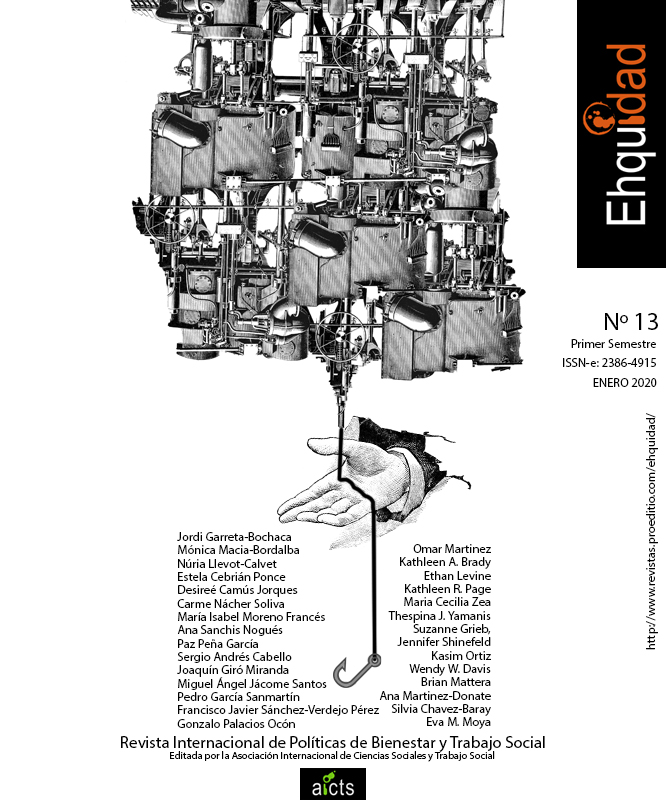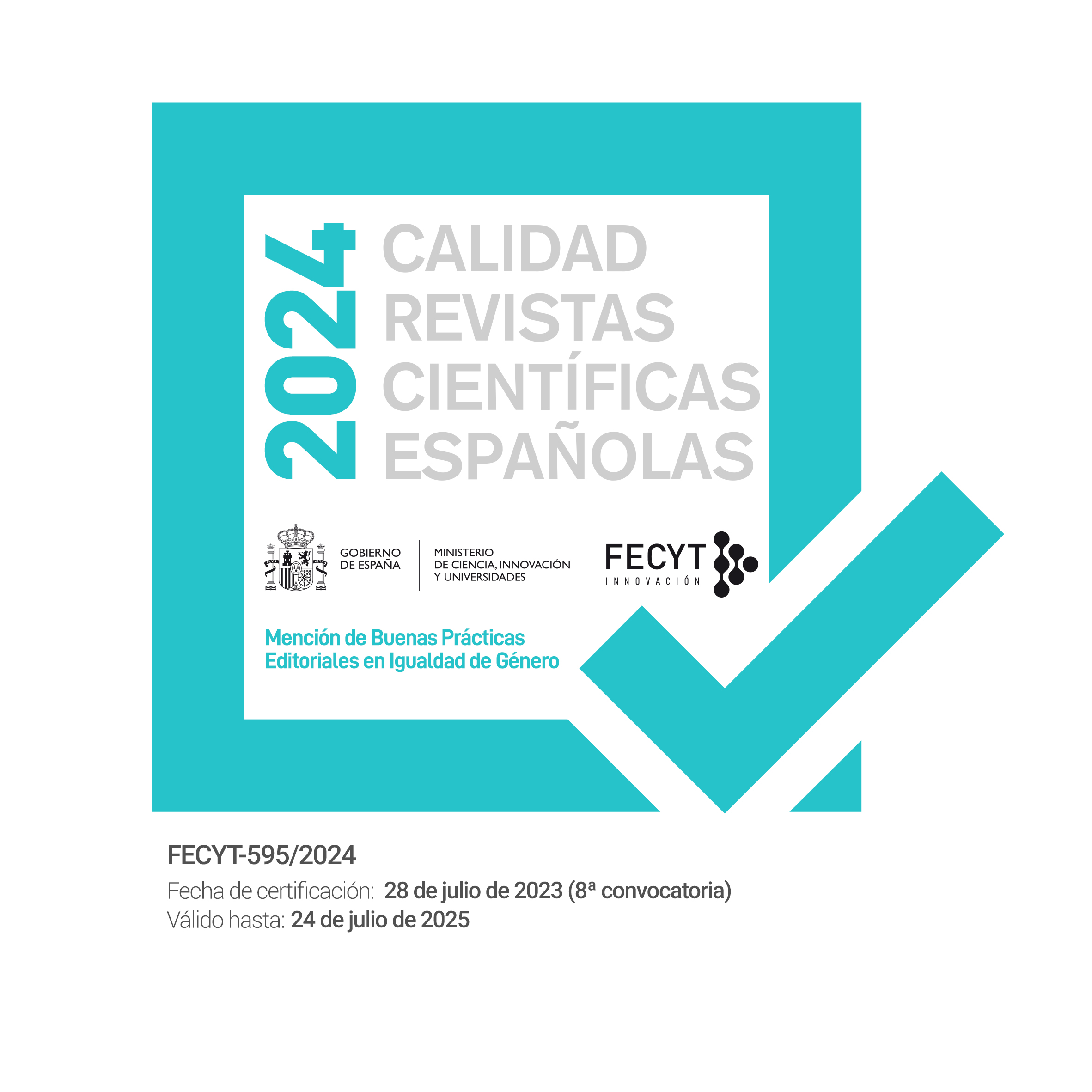The magical power of blood
The curse of the vampire from an anthropological point of view
DOI:
https://doi.org/10.15257/ehquidad.2020.0007Abstract
We all have heard about vampires. Many cultures have developed myths and legends about vampires with different features. These tales have several common elements, as the dualism between life and death. Vampirism is one of the most enduring, universal, popular myths of all times, being one of the most archaic images that society has feared. Popular tales, folk legends and mythological stories about beings that prey upon others to drink their blood have been told for centuries across myriad peoples all over the world. Over the past few centuries, modern vampire myths emerging out of Europe have outlined the bloodsucking monsters as those who have risen from the dead to feed on human blood by night, sleeping in coffins by day to avoid the effects of the sun. Bram Stoker’s 1897 novel Dracula provided us with the now iconic archetype. Vampires are deeply associated to blood, the vital fluid whose consumption has been a curse both for such a being and for the peoples. According to social, anthropological conceptions, these symbols do not come from nothing, but follow a process of transformation, emerging from real experience, intertwined with the cultural tradition. We intend to show and analyze the reason for such a linking.
Downloads
References
Auguet R. (1972). Cruelty and civilization. The Roman Games. New York: Routledge.
Bahn, P. G. (1988). The Cambridge Illustrated History of Prehistoric Art. Cambridge: Cambridge University Press.
Barber, P. (1988). Vampires, Burial, and Death: Folklore and Reality. New Haven: Yale University Press.
Barrowclough, D. (2014). Time to Slay Vampire Burials? The Archaeological and Historical Evidence for Vampires in Europe. Cambridge: Red Dagger Press.
Baskin, J. R. & Seeskin, K. (2010). The Cambridge Guide to Jewish History, Religion and Culture. Cambridge: The Cambridge University Press.
Beresford, M. (2008). From Demons to Dracula. London: Reaktion Books.
Bernheisel, Steve (1998). In the Blood. Available at http://www.pathwaytodarkness.com/ (October 10th 2019).
Biale, D. (2007). Blood and belief. The circulation of a symbol between Jews and Christians. Berkeley: University Press of California.
Bildhauer, Bettina (2003). Blood, Jews and Monsters in Medieval Culture. In Bettina Bildhauer and Robert Millis (eds.), The Monstrous Middle Ages. Cardiff: University of Wales Press.
Bormann, N. (1999). Vampirismo. El anhelo de la immortalidad. Barcelona:
Timun Mas.
Bulgakov, S. (1997). The Holy Grail and the Eucharist. Hudson: Lindsfarne Books.
Bunson, M. (1993) Vampire: The Encyclopaedia. London: Thames & Hudson.
Chevalier, J.C. & Gheerbrant, A- (1969). Dictionnaire des symboles, mythes, rêves, coutumes, gestes, formes, figures, couleurs, nombres. Paris: Robert Laffont/Jupiter.
Clark, K. L. (2009). Infamous lady: the true story of Countess Erzsébet Báthory. New York: CreateSpace.
Conrad, G. W. & Desmarets, A. A. (1984) Religion and Empire: The Dynamics of Aztec and Inca expansionism. Cambridge: Cambridge University Press.
Corradi Musi, C.(1995). Vampiri europei e vampiri dell'area sciamanica. Catanzaro: Rubbettino.
Cosmacini, G. (2007). La religiosità della medicina. Dall’antichità ad oggi. Bari: Laterza.
Creed, B. (1993). The Monstrous Feminine: Film, Feminism and Psychoanalysis. London: Routledge.
Cruz, J. C. (1984). The Shroud of Turin, the True Cross, the blood of Januarius. History, Mysticism, and the Catholic Church. Huntington: Our Visitor on Sunday Inc.
DALBY, R. (1988). Twelve Gothic Tales. London: O. U. P.
Davison, C. M. (1997). Blood Brothers: Dracula and Jack the Ripper. In C. M. Davison (ed.), Bram Stoker’s Dracula: Sucking Through the Century 1897-1997. Toronto: Dundurn P.
Dundes, A. (1980). Wet and Dry, the Evil Eye: An Essay in Indo-European and Semitic Worldview. In A. Dundes (ed.), Interpreting Folklore (pp. 93–133). Bloomington: Indiana University Press.
Durand, G. (1992). Les Struchtres Anthropologiques de L` imaginaire, 11 eme Edi. Paris: ’Bordas’.
Dyer, R. (1988). Children of the Night: Vampirism as Homosexuality, Homosexuality as Vampirism. In Susannah Radstone (ed.), Sweet Dreams: Sexuality, Gender and Popular Fiction. London: Lawrence & Wishart.
Eliade, M. (1990). A History of Religious Ideas. Chicago: University of Chicago Press.
Foucault, M. (1981). The History of Sexuality: An Introduction. Trans.: Robert Hurley. London: Penguin.
Gaffiot, F. (1934). Dictionnaire Illustré Latin-Français. Paris: Hachette.Garraud, Olivier & Lefrère, Jean-Jacques (2014). Blood and blood-associated symbols beyond medicine and transfusion: far more complex than first appears. Blood Transfus12 (1), 14–21. doi: 10.2450/2013.0131-13.
Girard, R. (2005). Violence and the Sacred. London and New York: Continuum.
Goddu, T. (1999). Vampire Gothic. American Literary History 11(1), 125-141.
Hampl, J. S. & Hampl, W. S. (1997). Pellagra and the origin of a myth: evidence from European literature and folklore. Journal of the Royal Society of Medicine, 90, 636-9.
Harenda, Olivier (2016). Bram Stoker’s Dracula: The Master of Terror and his Impact on Popular Culture. In Anna Kwiatkowska (ed.), Old Masters in New Interpretations: Readings in Literature and Visual Culture. Newcastle upon Tyne: Cambridge Scholar Publishing.
Herbert, J. A., Korte, A. M. & Johnson, J. A. (2003). Wholly Woman, Holy Blood: a feminist critique of purity and impurity. London: Trinity Press International.
Hodgart, M. J. C. (1962) [1950]. The Ballads. New York: W. W. Norton.
Huet, M. (1997). Deadly Fears: Dom Augustin Calmet’s Vampires and the Role of Death. Eighteenth Century Life 21, 222-232.
Hughes, W.(1997). ‘For the blood is life’: the construction of purity in Bram Stoker’s Dracula. In Tracey Hill (ed.), Decadence and Danger: Writing, History and the Fin de Siècle. Bath: Sulis P.
Jackson, R.(1981). Fantasy. The Literature of Subversion. London: Methuen.
Le Fanu, J.S. (1992). Ghost Stories. Nueva York: St. Merton´s Press.
Leatherdale, C. (1987). The Origins of Dracula. London: William Kimber.
Livingstone, D. N. (2008). Adam’s Ancestors: Race, Religion, and the Politics of Human Origins. Baltimore: Johns Hopkins University Press.
Lock, M. (2002). Twice Dead: Organ Transplants and the Reinvention of Death. Berkeley: University of California Press.
Marlowe, C. (1988). Doctor Faustus. Lebanon: York Press, Library of Lebanon.
Märtin, R.P. (2000). Los “Drácula”. Vlad Tepes, el empalador, y sus antepasados. Trans.: Gustavo Dessal. Barcelona: Fábula.
Martínez Laínez, F. (2001) Tras los pasos de Drácula. Barcelona: Ediciones B.
Masters, A. (1974). The Natural History of the Vampire. London: Mayflower.
McClelland, B. (2006). Slayers and Their Vampires: A Cultural History of Killing the Dead. Michigan: University of Michigan.
McCracken, P. (2003). The Curse of Eve, the Wound of the Hero. Philadelphia: University of Pennsylvania Press.
McNally, T. & Florescu, R. (1994). In Search of Dracula: The History of Dracula and Vampires Completely Revised. Boston: Houghton Mifflin Company.
Meyer, M. L. (2005). Thicker than Water. The Origins of Blood as Symbol and Ritual. New York and London: Routledge.
Miller, D. (2012). Are you sure digging him up is a good idea? Archaeologists find Bulgarian 'vampires' from Middle Ages with iron rods staked through their chests. Daily Mail, p. 13:50 (June 5th 2012). (October 10th 2019).
Mitchell, N. (1982). Cult and controversy: the worship of the Eucharist outside mass. New York: A Pueblo Book.
Murgoci, A. (1926). The Vampire in Roumania. Folklore 37(4), 320–349.
Mutch, D. (2013). Introduction: ‘A Swarm of Chuffing Draculas’: The Vampire in English and American Literature. In Deborah Mutch (ed.), The Modern Vampire and Human Identity (1-17). London and New York: Palgrave Macmillan.
NIV., (2002). Study Bible. Fully Rev. Grand Rapids: Zondervan.
Paoli, U.E. (1973). La vida en la Roma antigua. Trans.: J. Farrán y Mayoral & Natividad Massanés. Barcelona: Iberia.
Penrose, V.(1987). La condesa sangrienta. Trans.: Mª Teresa Gallego Urrutia & Mª Isabel Reverte Cejudo. Madrid: Siruela.
Petoia, E.(1995). Vampiros y hombres–lobo: orígenes y leyendas desde la antigüedad hasta nuestros días. Trans.: Alejandro Pérez. Barcelona: Círculo de Lectores.
Pile, S. (2003). Perpetual returns: Vampires and the ever-colonized city. In R. Bishop, J. Phillips, & W. W. Yeo (eds.), Postcolonial urbanism: Southeast Asian cities and global processes (pp. 265-284). New York: Routledge, Taylor & Francis Group.
Pirie, D. (1977). The Vampire Cinema. London: Quarto Publishing Ltd.
Pokorny, J. (1959). Indogermanisches etymologisches Wörterbuch, vol. 1, Bern, Munich: A. Francke.
Rodríguez de la Sierra, L. (1988). Origin of the myth of vampirism. Journal of the Royal Society of Medicine91, 290.
Scott, C. (1997). (selec.) Relatos cortos de fantasmas. Madrid: M. E. Editores.
Siddiqi, M. I.(2000). The Ritual of Human Sacrifice in Islam. Lahore: Idara Isha At-E-Diniyat (P) Ltd.
Silver, A. & Ursini, J. (1997). The Vampire on Film: From Nosferatu to Interview with a Vampire. New York: Limelight Editions.
Skal, D.J. (1996). V is for Vampire. The A–Z Guide to Everything Undead. London: Robson Books.
Skeat, W. (1993). Concise Dictionary of English Etymology. Ware: Wordsworth.
Smith, Andrew (2007). Gothic Literature. Edinburgh: Edinburgh University Press Ltd.
Soler, J. (2004). La subasta de Dracula. El País Semanal. (April 18th 2014).
Stoker, B. (1989). Dracula. Oxford: O. U. P., The World's Classics.
Sugg, R. (2008). The art of medicine - Corpse medicine: mummies, cannibals, and vampires. The Lancet 371, 9630. Doi: 10.1016/S0140-6736(08)60907-1.
Summers, M. (1991). The Vampire: His Kith and Kin. New York: Dorset Press.
Teti, V.(1994). La melanconia del vampiro. Mito, storia, immaginario. Roma: Manifestolibri.
Tiziani, Moreno (2009). Vampires and vampirism: pathological roots of a myth. Antrocom5, 2, 133-137.
Tresidder, J. (ed.) (2004). The Complete Dictionary of Symbols. San Francisco: Chronicle Books.
Twitchell, J. B. (1985), Dreadful Pleasures: An Anatomy of Modern Horror. New York & Oxford: O. U. P.
Twitchell, J. B. (1986). The Living Dead: A Study of the Vampire in Romantic Literature. Durham: Duke U. P.
Tylor, E.B. (1929). Primitive Culture: Researches into the Development of Mythology, Philosophy, Religion, Language, Art, and Custom. New York: G. P. Putnam’s Sons.
Vanden Bergh, R. L. & Kelly J. F (1964). Vampirism: A review with new observations. Archives of General Psychiatry11, 543-547.
Varma, D.P. (1989). The Vampire in Legend, Lore and Literature. In Margaret L. Carter (ed.), Dracula: The Vampire in Literature: A Critical Bibliography. Ann Arbour: UMI Research Press.
Walker Bynum, C. (2007). Wonderful Blood Theology and practice in late medieval Northern Germany and beyond. Philadelphia: University of Pennsylvania Press.
Wilkinson, W. (1971) [1820]. An Account of the Principalities of Wallachia and Moldavia. New York: Arno.












